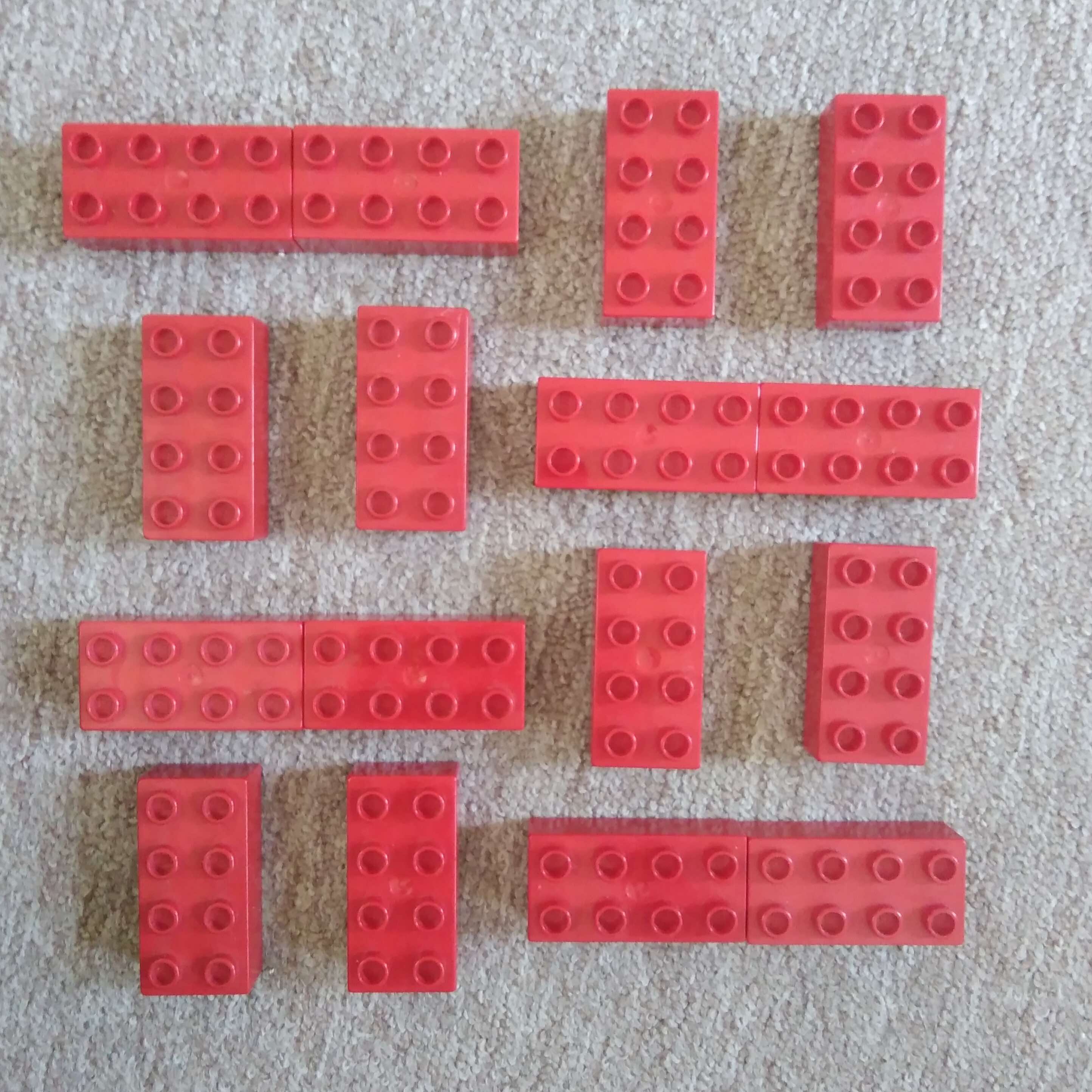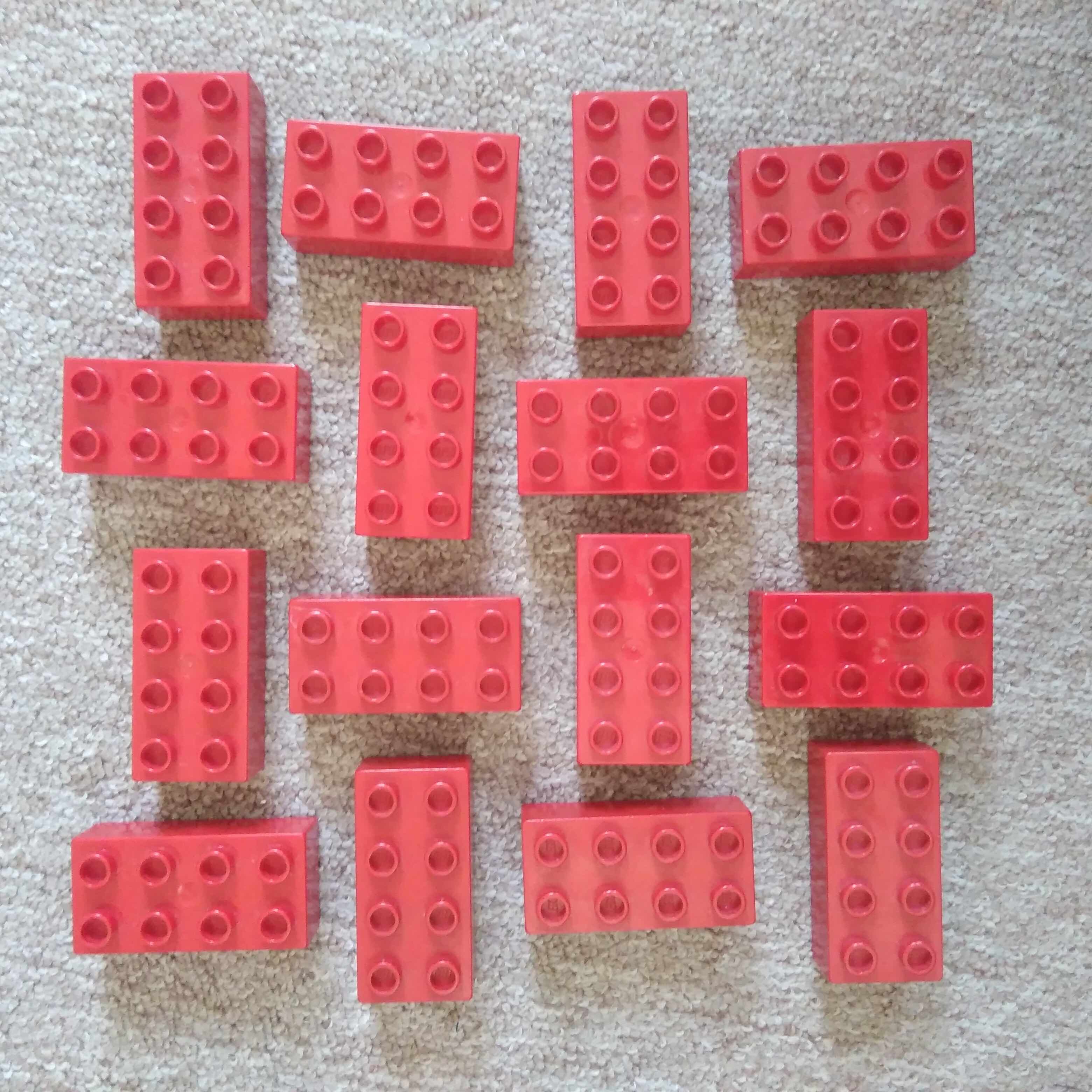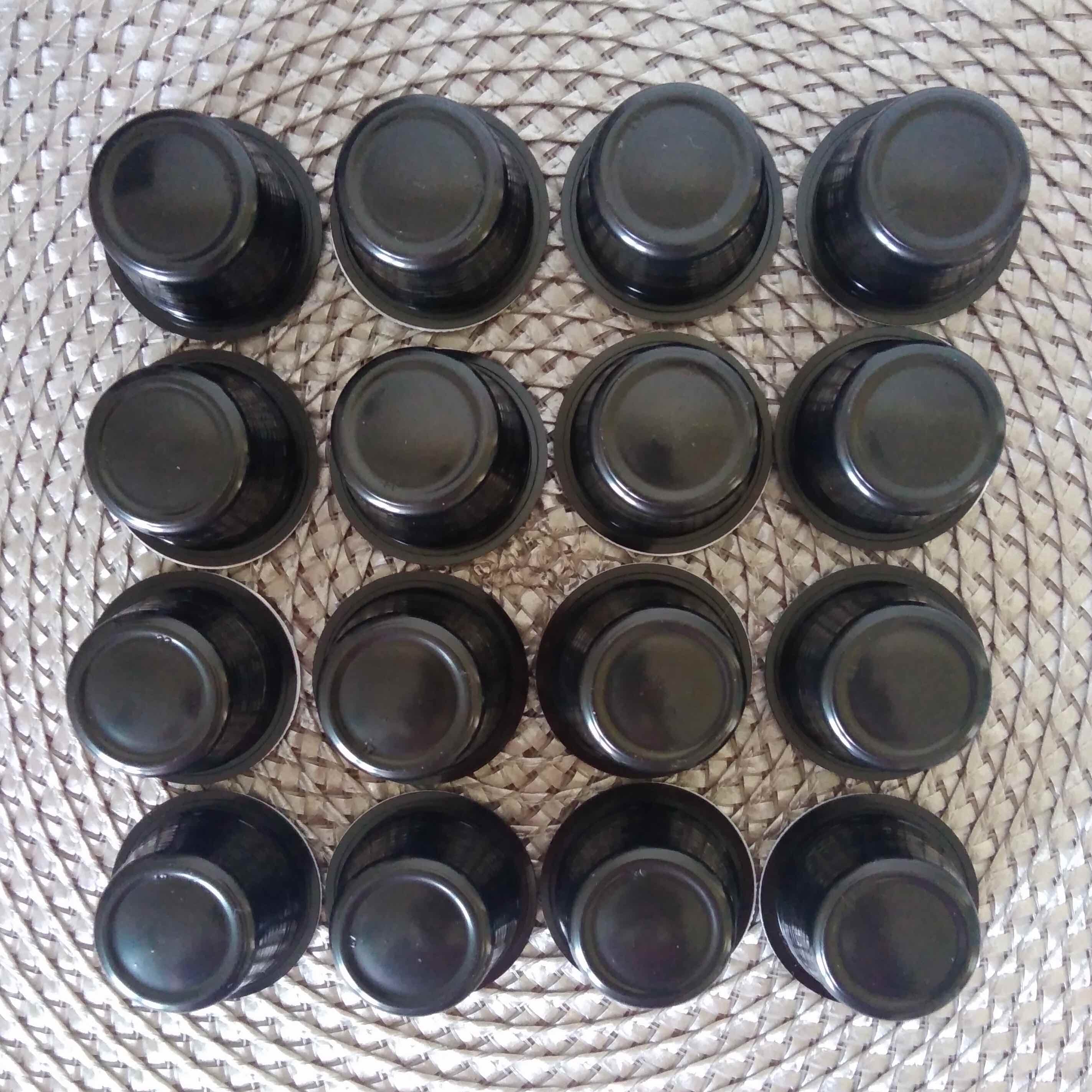Now you can come up with a plan or a design. For example, you can turn the first object to the right, the second to the left, the third to the right again, and so on. You can also do different things in different rows: in the first row, turn the first object to the left, the second to the right, and so on; in the second row, flip the first object upside down, skip the second, repeat; copy this sequence in the third row, then go back to the original left-right pattern in the fourth one.
Does this sound complicated? It certainly can be. But you don’t need any instructions at all. Just try it out: if it looks regular and pretty, then you have most likely created a pattern with a repeating structure.
Our first example is made with sixteen chocolate ducks.
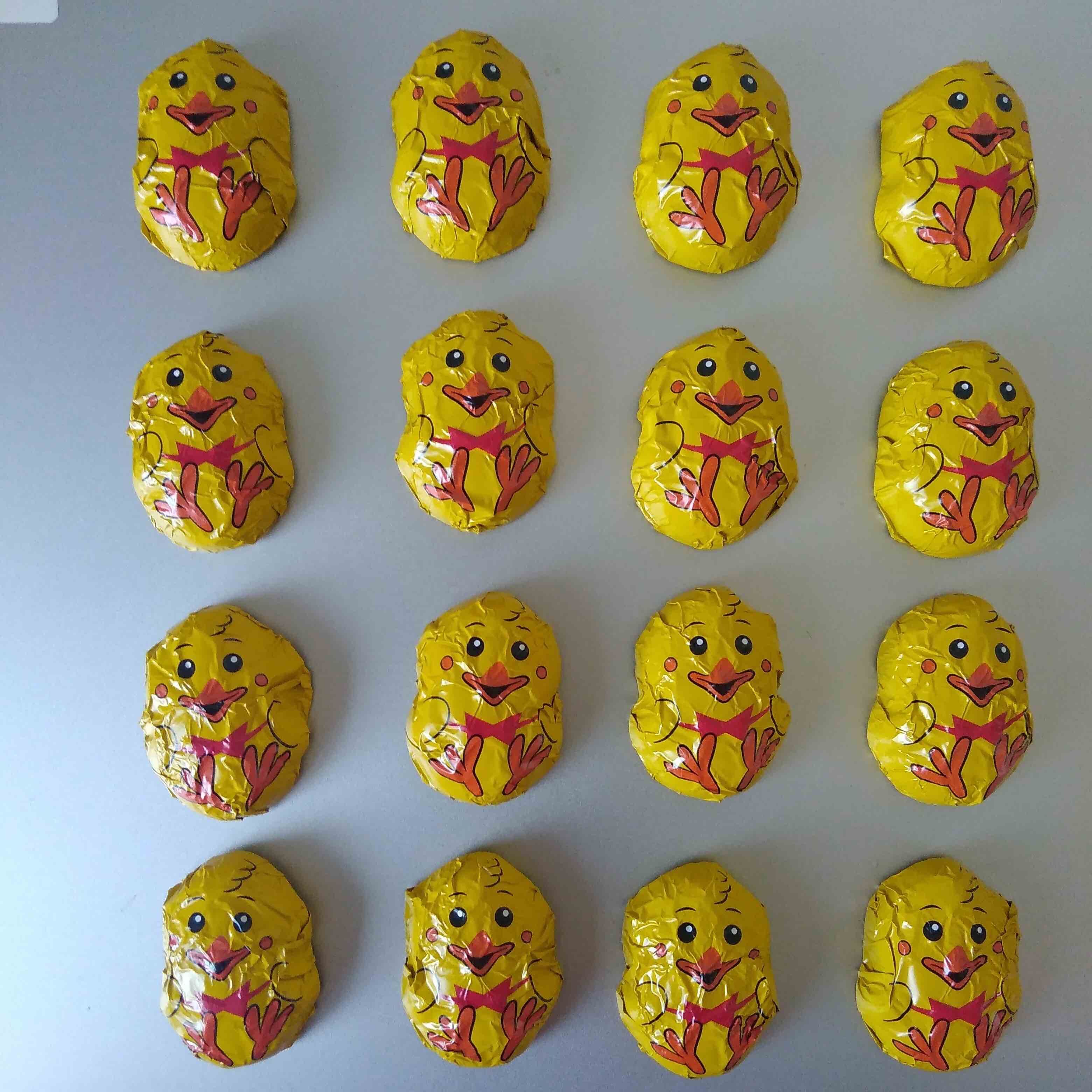
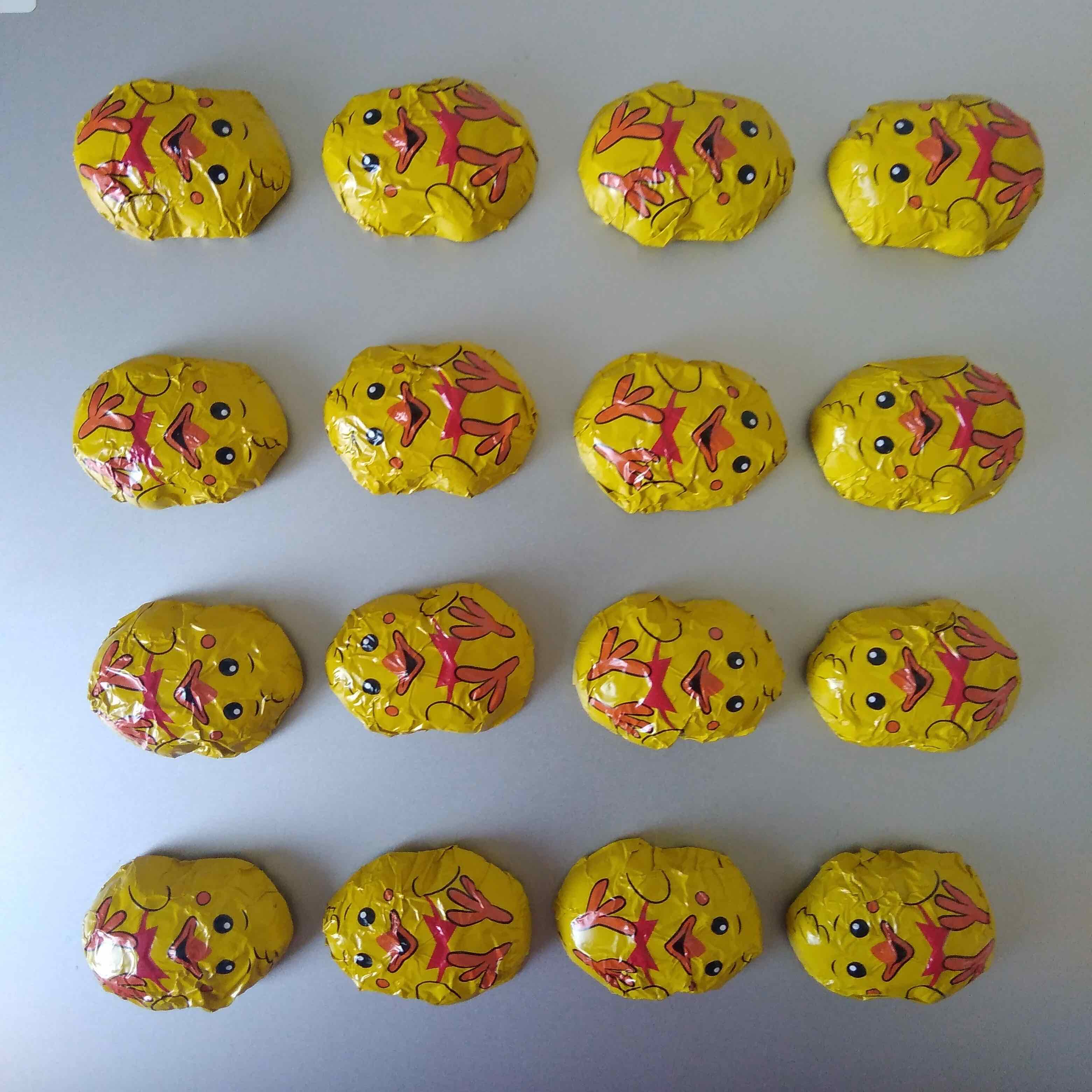
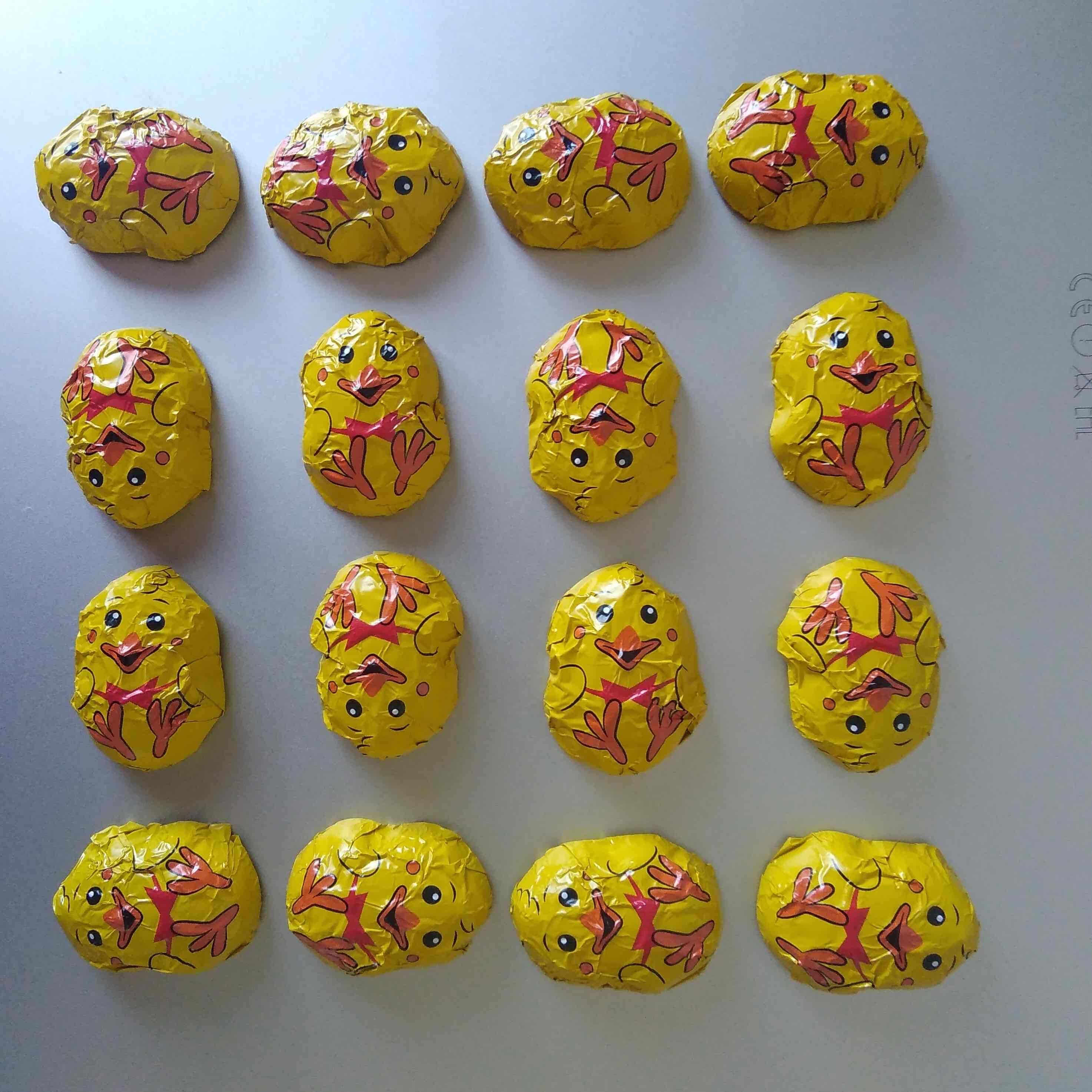
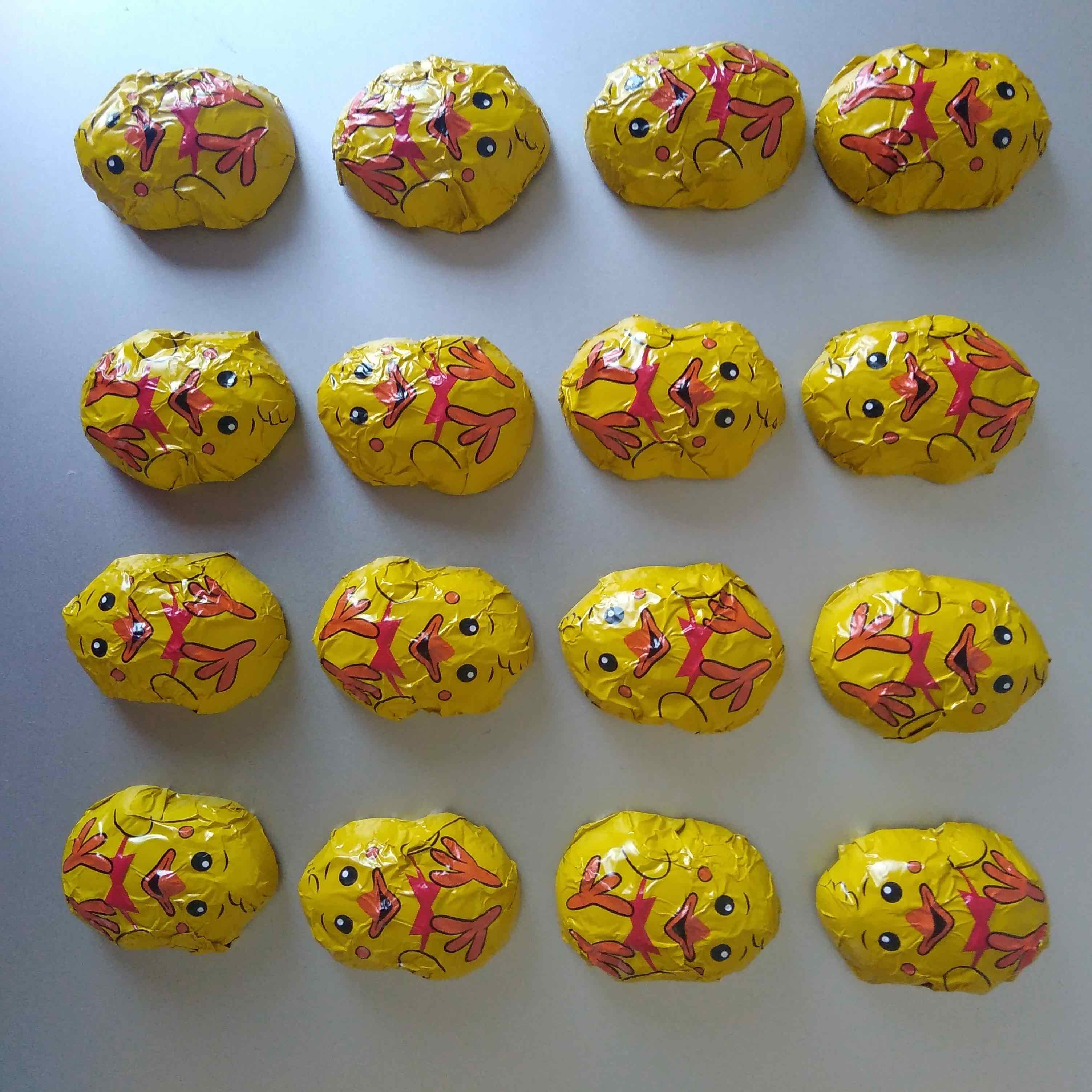
Some objects make it difficult to see the underlying pattern.
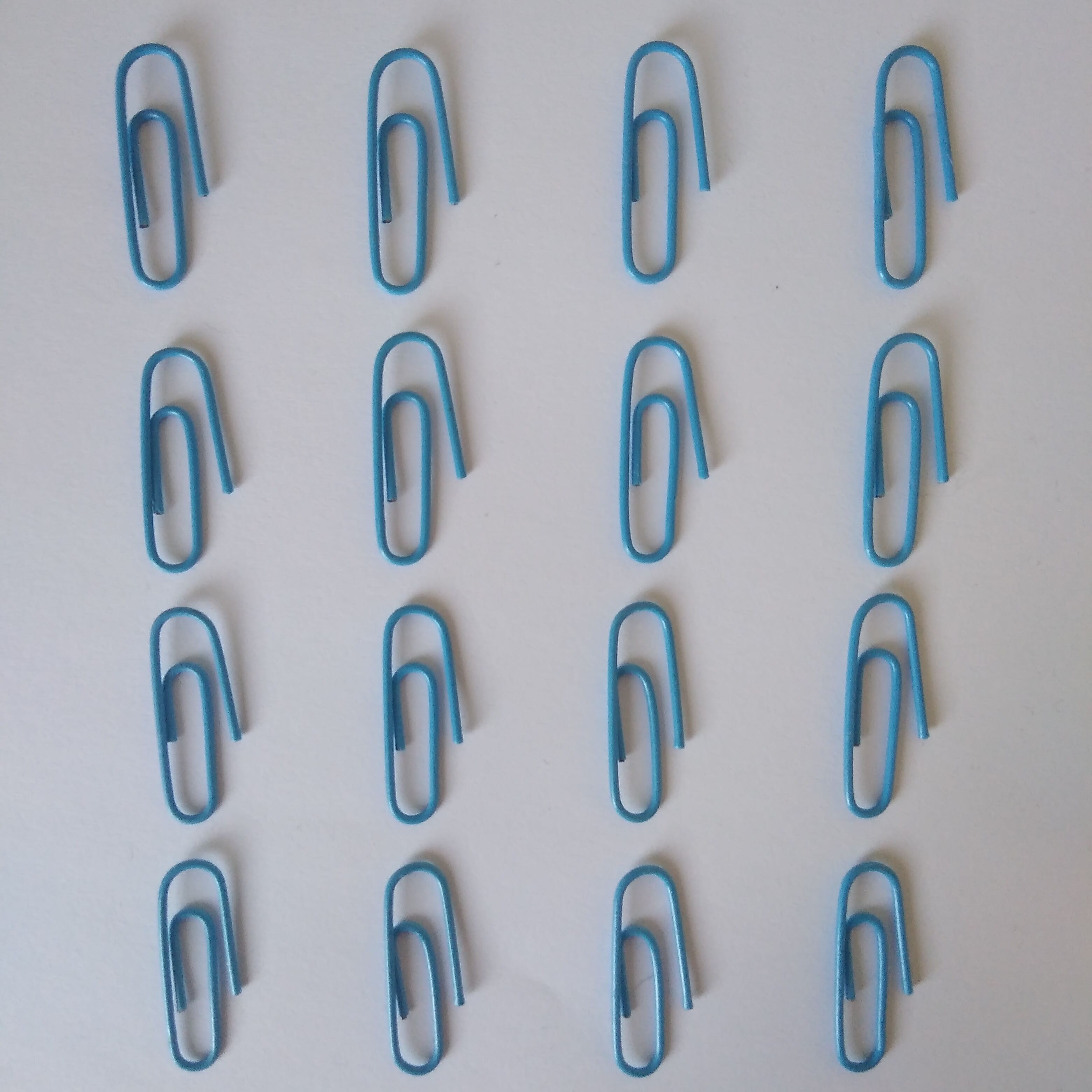
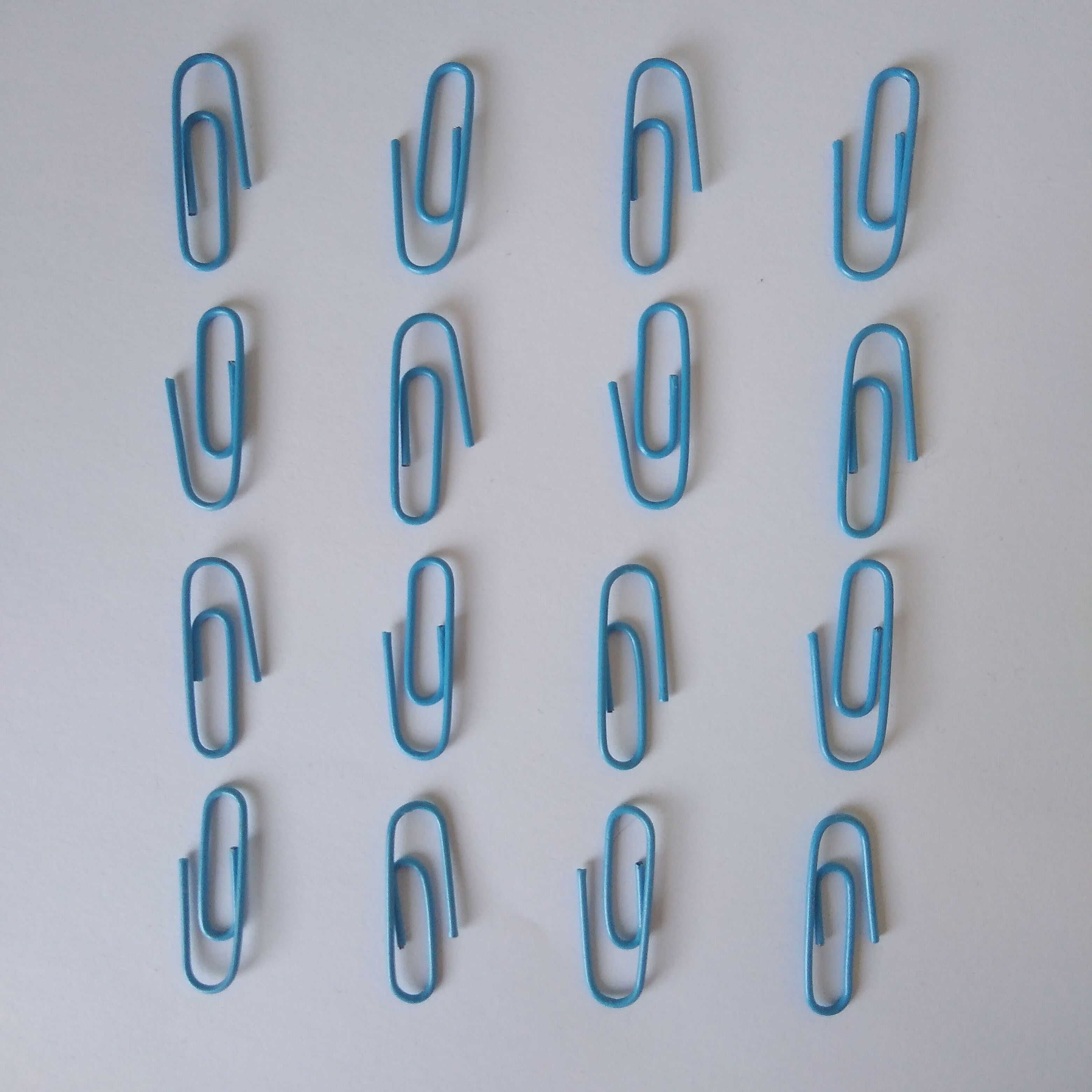
Some objects do not give rise to as many patterns as others. Lego bricks are a good example.
